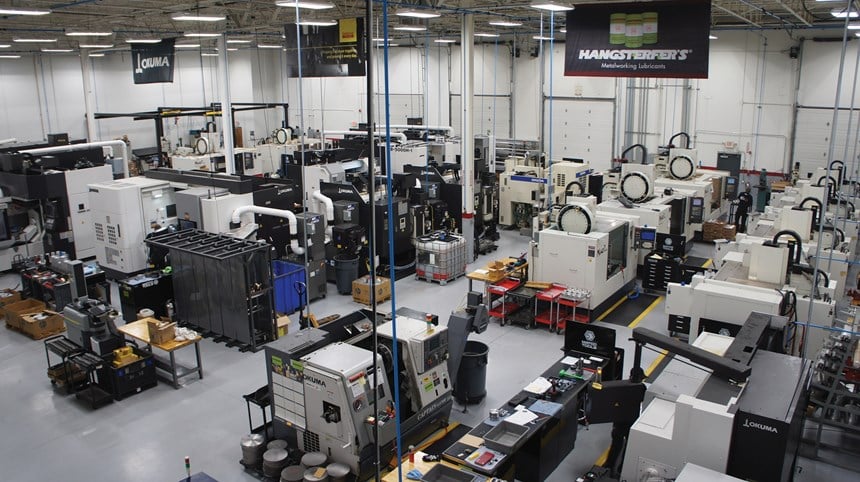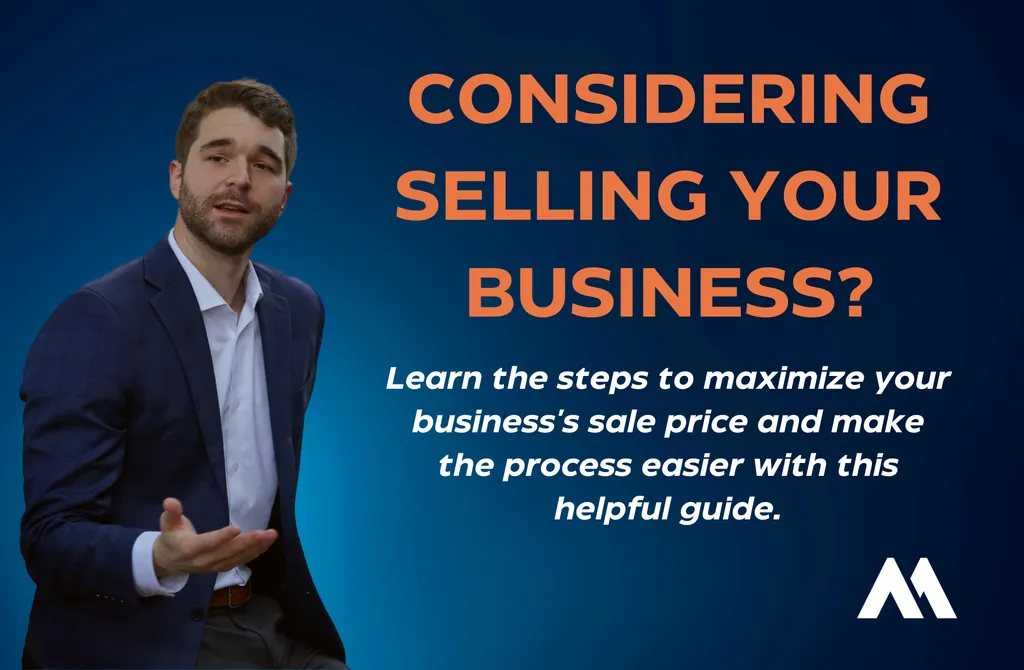You’ve worked hard, built relationships, and provided care for those among us who need it most. Now you’re thinking about selling your business, and you have questions.
Questions like, “Where do I start?”, “What’s my business worth?” and, “How does the process work?”.
Good news, you're in the right place. In this blog we'll cover:
- How to value your business
- The factors impacting the value of your business
- What you can do to prepare
- A typical sale timeline and process
- The different buyers for your business
- How to prepare for life after the sale
Let's jump right in.
How to Value Your Non-Medical Home Care Business
At MidStreet, we use three valuation methods to determine a range of the most probable selling price when conducting a free business valuation. Those methods are:
- The Multiple of SDE method
- Discounted Cash Flow method
- Buyer-test method
Today we’re going to teach you The Multiple of SDE method. This is the most commonly used valuation technique for businesses doing less than $25M in revenue.
The basic equation is:
Seller's Discretionary Earnings x Industry Multiple = Business Value
We'll start by calculating Seller’s Discretionary Earnings or SDE.
SDE represents the total financial benefit one owner-operator receives from their business. To calculate it, you must add certain expenses back into your net profit. These expenses are called "Add Backs".
The most common add backs are officer’s salary, health insurance, depreciation, interest, and amortization.
Other discretionary or situational add backs include charitable contributions, 401k benefits, or large one-time expenses.
To drive this concept home, let’s do an example valuation.
SDE Example: ABC Franchised Home Care
ABC Franchised Home Care has asked us to perform a free business valuation. The company has one owner, who works full time in the business and takes a salary of $65,000. Last year, the owner decided to give back to the community by donating $3,300 to help build a walking path at the local senior center. The company contributes approximately $5,000 towards the owner’s health insurance each year and the owner purchased a company vehicle through the business, which is now being depreciated at $7,700 per year.
MIDSTREET TIP
If there is more than one owner in your business who takes a salary and works in the business, you must add back both salaries, and expense the cost to hire an employee to replace one owner's responsibilities.Notes:
A – Officer’s Salary is added back to Net Profit
B – Company’s share of the owner’s payroll taxes is added back
C – Interest is added back per IBBA guidelines
D – Charitable Contributions are not critical to business operations
E – Depreciation is added back per IBBA guidelines
F – Owner’s health insurance is an owner benefit
After adjusting the financials, the owner’s total benefit increased from $177,000 to $264,973 in Seller’s Discretionary Earnings.
Now our equation is:
$264,973 x Industry Multiple = Business Value
Need further explanation? Check out our in-depth guide on calculating your SDE.
NOTE
In the Multiple of SDE method, it's customary to calculate a company's SDE for the three most recent years, and weigh each year on a percentage scale. For this example, we've only adjusted one year's financials.
Calculating the Non-Medical Home Care Multiple
Now that we've calculated SDE, we need to determine what multiple to apply.
To start, we assess comparable sales of non-medical home care companies over the last ten years. We use resources like DealStats and PeerComps to collect our comps.
For the non-medical home care industry, we found 70 comparable sales, with the following statistics:
Highest Multiple of SDE: 3.64
Lowest Multiple of SDE: 1.95
Average Multiple of SDE: 2.87
On average, non-medical home care businesses sell for a multiple of 2.87.
Let’s use this multiple to finish up our equation:
SDE x Industry Multiple = Business Value
$264,973 x 2.87 = $760,472.51
Therefore, the Multiple of SDE method has estimated ABC Franchised Home Care's value at $760,472.51.
Is that all there is to it?
Yes and no.
All businesses are unique, and there are many factors that impact the multiple they will sell for.
Below, we’ll discuss the general factors that impact your multiple and the specific factors that impact non-medical home care companies.
General Factors Affecting Business Multiples
Think of your multiple as a measure of risk. Low risk translates to a higher multiple. High risk translates to a lower multiple. Easy, right?
Size of your company
The amount of revenue your company produces is the most significant factor impacting your multiple.
Companies with higher revenues are more valuable because buyers feel they can improve the profit margins after the acquisition, making the opportunity more attractive.
Also, since small companies tend to rely on fewer employees, there is a higher risk in the event employees leave.
Books and Records
Bad books and records will have buyers and lenders running for the hills. In the age of QuickBooks, FreshBooks, and countless other accounting tools, there’s no excuse for lousy recordkeeping.
Keep in mind Buyers are usually looking at multiple businesses. If they can’t easily assess your financials, they’ll be quick to move to a less confusing opportunity. In fact, bad bookkeeping is the most common deal-killer in our industry.
Clean books and records also make it easier for your broker to value the business and speed up any third-party financing your buyer may require.
Reputation
Your reputation matters. If you have built an excellent reputation in your service area, this will be a big plus in valuing and selling your business.
Reputation can be hard to quantify, so our advice is to boost your online status with reviews and testimonials.
Don’t buy it?
A recent report by Zendesk shows that 88% of buyers are influenced to buy based on reviews. A similar study done by Fan and Fuel shows that 97% of shoppers say they were moved to buy based on reviews.
The best way to start is by driving reviews to your Google My Business (GMB) page.
Warren Buffet once said: "It takes 20 years to build a reputation, and five minutes to set up a Google My Business page."
I’m pretty sure that’s how the quote goes.
If you’re new to GMB pages, check out HubSpot’s ultimate guide. This free service offered by Google can have a massive impact on your business.
Owner Involvement
Many business owners take a daily role in their business - there’s nothing wrong with that - but buyers often see it as a negative.
The more responsibilities you take on, the more critical you are to the success of your business. Buying your business and removing you from daily operations is risky for a buyer.
There’s a learning curve to owning and operating a business and most buyers recognize this when taking over. If your absence means the business will suffer, you may have an owner-involvement issue.
MIDSTREET TIP
Operation manuals can be very valuable to a buyer when taking over an existing business – it shows you've established standard operating procedures and makes it easier for them to get up to speed.
Specific Factors Affecting Non-Medical Home Care Value
Location, Location, Location
While location affects the value of all businesses, it is especially vital for a non-medical home care company.
For obvious reasons, it’s beneficial to live in proximity to a large elderly population. According to the 2016 US Census, Florida, Maine, Vermont, West Virginia, and Montana have the highest elderly population of US states.
The best measurement will be by your city or zip-code. To find this information for your location, search the Census.gov community facts webpage.
NOTE
In addition to the demographics of your area, you can expect a higher value if you're located near a city or urban area. Most buyers would prefer to relocate to these areas, and they often have a higher population density with more growth potential.Client Concentration
Client concentration issues are widespread in the home health care business and they’re often a buyer’s biggest concern.
As seniors aging in place approach the end of their lives, their care needs often increase, and so do the number of hours they bill.
As a result, businesses can wind up with a small number of full-time care clients contributing a disproportionate amount of revenue to their business.
It seems crass to discuss human life in this way, but it’s the reality of this industry. These are riskier clients because they contribute a lot to the business and could pass away at any moment.
Try to establish a mix of day-care only and 24/7 care clients. It will garner a higher value when you sell. Our recommendation to make sure your 24/7 clients make up less than 30% of your revenue stream.
MIDSTREET TIP
Client concentration also relates to how you acquire new clients. If all your referrals come from one hospital, salesperson, or marketing channel, be aware that buyers will perceive it as a higher risk.How these Factors Impact Multiple
To circle back, these specific and general factors above will impact how high your multiple will be. This is where a broker’s experience in business valuation becomes important.
Important Reminders When Selling a Non-medical Home Care Company
Licensing Issues
Every state is different in how they handle the distribution and transfer of licenses during the sale of home care businesses. Some states have moratoriums on licenses while other states don’t even require a license.
For example, in North Carolina, current licensees can transfer an existing license but must follow specific instructions.
Virginia requires home health care owners resubmit for license approval every year, and even conducts and onsite inspection for initial licensure.
And South Carolina has no moratorium; however, you must apply for a state-issued license to operate a non-medical home care company.
You should always check with your state and local licensure agency to make sure you understand the rules around licensure and how to transfer ownership of your license.
Franchise Vs. Private
In the non-medical home care world, owning a franchise has major benefits over a private company.
Aside from the typical benefits (established procedures, marketing materials, and training), the biggest benefit is that your franchisor assists with the regulatory hurdles. There’s plenty you are still responsible for, but the franchise is a major resource.
However, the franchise also has drawbacks. They often make the process of transition more complex, and can reduce your buyer pool dramatically.
MIDSTREET TIP
Being part of a franchise usually means it will take longer to sell the business. Franchisors must approve any and all buyers, and sometimes this process can add weeks to the selling timeline.Training Period
Most agreement to purchase contracts will include a training period. Once you close, you’ll still be responsible for training the new owner and ensuring their transition is as smooth as possible.
Training periods are negotiable, but we typically aim for 100 hours of training with 6-12 months of phone, text, and email consultation.
For most buyers, this is sufficient. Any training following this period must be negotiated separately and sellers are entitled to compensation.
Non-Compete
Like the training period, your agreement to purchase contract will likely include a non-compete clause as well.
We typically see a three to five year non-compete in a 50-mile radius of the business. These are negotiable, but we don't recommend pushing too hard without good reason.
Why? Without a non-compete, there's nothing to stop an owner from selling their business and immediately starting a new business in the same industry/area. They could feasibly pull all their new employees, previous clients, vendors, and business away from the business they just sold.
Overview Of The Sale Timeline And Process
When it comes to how long it will take to sell a business, it’s essential to understand every business sale will be different. Based on sale data over the last three years, the average time it takes to sell a business is roughly six to ten months.
Let’s Look At An Example Sale Timeline
Individual Buyers
These are the types of buyers you will most likely be dealing with when selling your non-medical home care business.
If the sale price of your business is in the $450,000 – $3,000,000 range, finding an individual buyer to purchase through the SBA (Small Business Administration) is a great option.
An SBA deal allows a seller to walk away with the full asking price for their business, while the buyer can purchase for as little as 10% of the project cost. This protects sellers and gives buyers a proven path to purchase a company without injecting all of their capital.
Strategic Buyers
You may encounter strategic buyers when selling your business. Most likely, they will be another franchisee in your system. We commonly see franchisees from Visiting Angels, Interim Healthcare, Comfort Keepers, or Right at Home, for example.
If you are a privately owned, you may come across another private home care company wanting to expand their service area through acquisitions.
Strategic buyers are typically experienced in purchasing businesses and the process should be straightforward.
MIDSTREET TIP
We recommend having an adviser or a broker in your camp when dealing with any strategic or private equity buyer as they usually have significant resources and expertise in the industry.Private Equity Group (PEG)
The third type of buyer is a private equity group. More than likely, you won’t come across this type of buyer when selling your non-medical home care business.
However, should a private equity group approach you, here's how they work: A PEG's primary purposes are to provide a return for their investors. They purchase companies, improve operations and build them, pay dividends to their shareholders, and sell the company at a profit (often to a strategic buyer).
Preparing for Life After The Sale
Time to ride off into the sunset, right?
Not so fast. After selling you may experience some weird emotions you didn't anticipate. Before you reach the closing table, it's important to think about what comes next.
Take a look at our video on emotions when selling your business.
NOTE
In the end, the decision to sell your business is every bit emotional as it is logical.Do you have plans to retire to the beach? Maybe you want to start another business or venture opportunity. Or perhaps you haven’t even given it a thought.
I urge you to ask yourself these questions as they will surely come up during the selling process.
In the end, the decision to sell your business is every bit emotional as it is logical.
Further Questions?
If there’s anything we missed or that you don’t quite understand, give us a shout! We would love to speak with you and help in any way we can.




